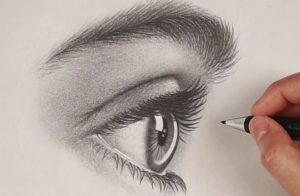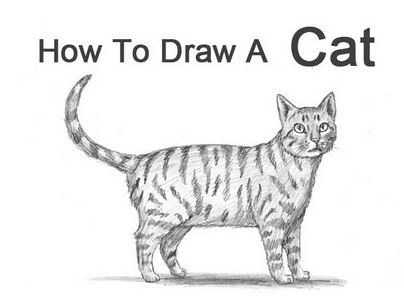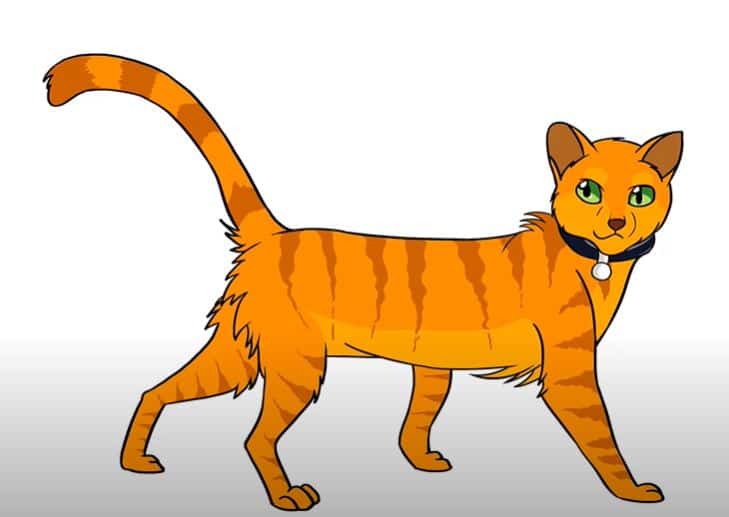How To Draw a Realistic Eye From the Side easy with this how-to video and step-by-step drawing instructions.

Please see the drawing tutorial in the video below
You can refer to the simple step-by-step drawing guide below
Step 1: Draw eyeballs
Lightly draw or draw a circle for the eyeball. It doesn’t have to be perfect because we’ll just use it minimally during our eye build and then we’ll remove it completely. In case you were wondering, my circle is 6cm in diameter.
Step 2: Draw the cornea
Draw a small bump or cornea in the direction you want the eye to face. I want to face the right side, so I will draw my cornea on the right side. In terms of size, the length of the cornea is roughly half the diameter of the eyeball (or the length of the radius).
Step 3: Draw Iris and Pupil
Now draw the iris by creating a tangent curve to the upper and lower parts of the cornea. Make sure your work is light so you can make changes easily.
Remove part of the eyeball that passes through the iris/cornea. Then, inside the iris, draw a narrow oval for the pupil.
Step 4: Draw eyelids
Now let’s draw the eyelids. Starting at the center of the eyeball, gently draw a curved line for the upper eyelid. It can partially cover your iris or expose it completely, then wrap the eyelid around the other side of your eyeball.
To draw the lower lid, create a curved line where the eyelids meet and then continue to swipe towards the bottom of the iris.
An example of a narrow eye (the iris is more exposed at the bottom than at the top. Normally, when we open our eyes, the iris is most exposed below, not above.) So, if you want to draw a narrow eye, keep that in mind: Okay, move on! Just above the upper eyelid, draw the eyelid crease.
You can use the eyelid shape as a reference or draw a crease with a more unique shape. Connect that pencil stroke to your upper lash line using a slight curve.
To finish off the bottom flap, I’m drawing an almost straight line down, but you can tilt it outwards or inwards if you’d like. You can add wrinkles at the corners of your eyes or at the end of your eyelids if you want. An example of a protruding eye.
Tip: If you wrap the eyelid skin very close to the eyeball, you can create a bulging eye effect: Once done, erase the circle guide and the parts of the iris that are out of line of sight.
Step 5: Position of eyebrows
Now let’s figure out where to put the eyebrows. Lines from left to right: Tail, arch, and top of eyebrows.
Draw a very faint line at the end of your eye, another line from the edge of the cornea, and then a perpendicular line away from the eye, similar to the image above.
They are for the tail, arch, and brow tip. Eyebrows come in all shapes and sizes, so don’t worry too much about this part. They are just rudimentary instructions.
Now that we have 3 guides, we can draw our eyebrows more easily – use them as rough paths/boundaries. You can draw your brows lower or higher than mine if you like, and you can draw as thick as you want.
Keep your pencil strokes extremely light so your outline won’t come out later – That will take away from the realistic effect we’re aiming for. When you are satisfied with your eyebrow shape, delete the 3 rules above. We’ll add eyebrows later!
Step 6: Draw Highlight / Reflection
Let’s add some highlights in the eyes. Highlights are the brightest areas of the drawing. The highlight can be from a nearby window or any light source.
Here are a few example shapes: These shapes are all curved because the eyeball is curved, so a rectangular window, for example, might look like a C shape.
You can create your own shapes and stretch them over the eyeball, covering as much or as little of the space as you like. If desired, you can add obstructions to the accent such as the silhouette of a person standing in front of the window or some curtains.
You can even create a gradient over your highlights to show the difference in light intensity. Anyhow, once your highlights are drawn, erase any lines that cut across them, clean them up. I like to use my kneaded eraser for this, by rolling the end until it’s pointed and then graphite off.
Here’s a close-up shot: You can even flatten your eraser to work at an angle: During the drawing process, try to keep the highlights as clean as possible so they can stand out turn on.
Step 7: Shade the students
Time for some shade! Let’s start with the pupil, shade it very dark, since it’s actually a hole in the iris.
Step 8: Shade the Iris
Next, we will shade the iris. Remember to be very careful around the highlights as we want to keep their edges sharp. You can make the shadow as light or dark as you like without making the pupil darker.
I recommend blending the iris now, using a paper towel or blending stump for example, to make it look smoother before moving on to the next step, or you can skip the blending if you like.
I combine my entire drawing at the end to keep the Youtube video short. But I highly recommend blending as you go on because it’s a lot easier that way and you can avoid smearing your work in the process.
I shade the light values, blend it, then add shadows, I try to blend only the shadows so as not to smear the darker graphite into the lighter areas. Then finally I add details. If I need to do any blending after the details have been added, I blend around them, being very careful not to blur or smudge my detail work.
My imaginary light source is coming from the top right, so I’m making the top part of the iris darker because the iris shape is recessed, so the top of the iris is actually facing away from the light, while the lower part of the iris points towards the light.
As I work my way up, I apply less and less pressure to get a gradient, as the concave iris shape starts to curve/toward the light.
Alternatively, you can shade the top part of the iris even darker to create a shadow from the eyelid.
What I like to do is make the iris outline darker than the iris body to create more contrast, but that’s completely up to you.
The big highlight is too strong for my liking, so I’ll make it more subtle by painting a gradient over it, making it dark at the bottom and lighter towards the top, like my example showed you earlier:
When you finish shading the iris, make sure that the outline of each highlight is no longer visible. If it remains, you may need to erase it a bit or paint the surrounding area a little darker so it blends in/disappears.
Okay, that’s the simple and quick version for shading the iris. If you want more details, you can apply the following steps…
Step 9: More detailed version of Iris
This part is optional, but to make the iris look more interesting you can add some small details like lines extending outward from the center. Use your pencil and eraser to draw these lines.
If you want to draw straight lines, you can flatten your kneaded eraser, then simply press and lift the graphite or rub it lightly. If you curve your lines closer to the pupil (the hole inside the iris), you can make the iris look more 3D.
Try to angle or space some of your lines randomly and change the thickness to make them look more natural. An example of a squiggly line. You can use a kneading eraser or a solid eraser for this. You can draw doodle shapes instead if you want.
I’m drawing this example on the same iris, but I’d recommend picking just one style or somehow merging the two. An eraser will definitely work as well, just make sure it’s pointed enough. You can cut the eraser to make it as sharp as you require. Also good for overlapping squares.
Then use a pencil to darken some of the gaps in between your squares to add some depth and contrast. These lines and squares are both part of the iris, so we’ll need to shade them similar to how we shaded the iris before adding them. Remember we shaded the upper part of the iris? I’m doing it again, except this time, lighter.
Oh, and shade around the outside of your pupil if you want the area to appear deeper. Anyway, that’s the detailed version of the iris. Of course you can stick with the simple version.
Step 10: Blur the whites of the eyes
Now polish the whites of the eyes. These are called eye whites, but they’re not exactly white, so don’t be afraid to shade them.
Refer back to your light source (mine is top right) – Shade the eyeball lightest where it faces the light and darker where it faces the light.
For very smooth shading, try to keep the pencil strokes close together to eliminate gaps. Cover the top and bottom of the whites of your eyes. Now we will shading the top and bottom of the eye whites. We shaded the top because the eyelid was sticking out and cast a shadow just below it, and the bottom because the round eyeball was curving away from the light source, giving it a shadow.
While we’re here, I’ll just shadow the iris border to soften the edge. You may want to blend your eyeballs before moving on to the next step…
You can add veins in the eyeballs by sharpening a pencil and drawing them very dimly.
Step 11: Shade the rest of the skin
Let’s paint the rest of the skin and then we’ll move onto the lashes.
Starting at the eyelid crease, I’ll shade lighter as I move away from it (when the skin curves and turns towards the light).
Tip: If your outline is still visible after shading around your eyes, try to lighten them or darken your shadows until the outline disappears.
To shade the brow area, I’ll revisit the light source on the top right and determine which skin areas face the light directly and which face it.
I’m coloring the right part of the eyebrow lighter than the left because it’s directly facing the light.
You can shade the brow area but you want to define the brow shape you like.
Step 12: Shade the rest of the skin
Let’s paint the rest of the skin and then we’ll move onto the lashes. Starting at the eyelid crease, I’ll shade lighter as I move away from it (when the skin curves and turns towards the light).
Tip: If your outline is still visible after shading around your eyes, try to lighten them or darken your shadows until the outline disappears.
To shade the brow area, I’ll revisit the light source on the top right and determine which skin areas face the light directly and which face it.
I’m coloring the right part of the eyebrow lighter than the left because it’s directly facing the light. You can shade the brow area but you want to define the brow shape you like.
Step 13: Draw eyelashes
Alright, it’s time to hook up. But before we paint any hair, I suggest you blend your shadow mode now as it will be quite difficult to blend all the individual lashes.
To draw eyelashes, first we need to sharpen the pencil. I’m working with a mechanical pencil, so it’s already pretty sharp. Practice drawing your lashes until your strokes become pretty consistent. Your eyelashes may curl more or less. Just make sure that the ends of the lashes are tapered.
You can use strobe motion to achieve that effect. If you’re having a hard time drawing smooth curves, rotating your sketchbook can help. Let’s start at the upper eyelid, creating lashes that grow from the bottom edge.
Tip: Avoid drawing too many lashes that run parallel to each other. If you pull them together, you can create lashes that look more natural and less patterned: There are several things you can do to make your lashes look more unique and random. Such as changing the length, distance or number of them curves.
Continue doing this until you reach the corner of your eye. The lashes located near the corner of the eye are usually shorter, thinner, and therefore appear lighter in color. Don’t forget to add some lashes along the other (distant) side of the eyelid. Let’s move on to the bottom cap, sprinkle the lashes along the ridge we created earlier (Put them in a random zig-zag pattern).
I like to draw these lashes much shorter and wider than the top lashes. You can paint lighter than mine if you want a more subtle look.
Again, avoid obvious stereotypes. You can draw the lashes yourself, join them at the ends or cross them together. You can also change the spacing, length, and thickness of your hair. Don’t forget to draw the lashes along the other (distant) side of the eyelid 🙂
Step 14: Draw eyebrows
Once you’re satisfied, it’s time to work on the brows. Hair growth pattern seems confusing, but let’s analyze it. We can draw a line through the eyebrow to separate it into two areas. I drew a line from the top right to the leftmost. This line is different for everyone because there are so many different brow styles. In zone 1 (bottom part) we will draw the hairs upwards and then when we do the left side they will point more towards the tail of the eyebrows. In zone 2 (top part), the hairs are mainly directed down towards the tail of the eyebrow. When the hairs from both areas meet, I’d rather tape them together instead of crossing them, but you can do whatever you like. Draw a line through the eyebrows to separate the 2 zones. Okay, let’s draw a blurred line for our brows to separate the 2 areas using short, disconnected pencil strokes as we don’t want the line to come out in the end. Then, using light strokes, roughly draw the hairs in zone 1 while remaining within the boundary. As you swipe to the left, curl and angle the hairs so they point more toward the ends of your brows. We’ll put this together in a second, so it doesn’t have to be perfect. Then draw a few faint hairs in zone 2 without cutting across zone 1. I will gently blend the brows using a regular tissue wrapped around my finger. Blending from right to left, basically, in the general direction, all the hairs are facing each other.
Step 15: Wet your eyes
To keep the eyes from getting wet, we can add water along the bottom of the eyeball. Take your solid or pointed eraser, flatten it and erase a thin space along the eyeball where it meets the lower eyelid. If the water flow doesn’t show up well, shade a bit around it. Contrast (increased) will highlight it. Or you can use a white gel pen or correction liquid to introduce a bright white value.
Step 16: Blend your eye drawings
If you’ve blended your drawing throughout the tutorial or you’re not interested in blending, feel free to skip the section on how to make the drawing stand out. Check to make sure that your shadow is as smooth as possible.
Okay, before blending we need to make sure our shadows are as smooth as possible, that means making sure there are no gaps between our strokes and any speckling areas are minimized to best possible level.
Before and after mixing with a paper towel and mixing the stump. Blend one part of your eye at a time, using a clean blending stump, tissue paper, pointed tip, or fine-bristled paintbrush (whatever your preference). I like to blend from highlights to shadows so I can avoid unwanted smudges. In large areas of the drawing, I wrapped the tissue around my finger and stroked it gently from the lightest to the darkest areas. Blend as much as possible until the drawing becomes nice and smooth.
Be very careful when you blend details around work like eyelashes and eyebrows, making sure not to blur/smear them. A blend tool with a pointed tip like a blend stump will work well to get into tight spaces, blending exactly where you want it. But you can also use a folded tissue: Carefully blend around the lashes with a pointed-tipped blending tool (I used a folded facial tissue). As you blend, follow the direction of each lash, being careful not to smudge them. If you are using paper towels and have a tight spot that you need to get into, fold your tissue using fewer layers, make it tighter, or you can blend the area with a pencil. sharpened, essentially filling in any white dots or grooves on the surface of the paper. When the tissue gets too dirty, fold it up using a clean spot or just rotate it to a cleaner spot.
Tip: You can remove excess graphite using a gently kneaded gouache eraser (learn how to make this eraser here). Here’s how I removed the flecked areas to make the drawing look smoother. Areas that don’t have enough graphite can be filled in with the dirty blend tool (which also blends the drawing at the same time).
Okay, note! So we covered this earlier, but if you still have a visible border around the cornea and you can’t remove it because it looks weird without the border, you You can make it blend in by shading the skin just outside of it just enough to make the contour disappear. Now, the border of the cornea is no longer visible because it has merged into the background.
Step 17: Make drawings stand out
If your drawing doesn’t stand out enough, try cleaning off the brightest parts of each highlight, or use a white gel pen/correction liquid to make the highlights bright white.
You can also shade the darkest areas of your drawing even darker. Or you can add more detail to the iris to make it stand out more, like the example I showed earlier (In the section called “More detailed version of the iris”).
I also followed and blended more to make the drawing smoother.
Step 18: Extra tips
If you want to draw small wrinkles in the skin like I did here along the upper eyelid, clamp your kneaded eraser flat and then gently press it along the eyelid, taking out a very small amount of charcoal. lead. Lay them out at random and change the angle. I hope this guide was helpful! If you have any questions, leave them below. If you haven’t seen the YT guide, you can click here to see it. I hope you are all staying safe and doing well. Thanks for visiting!


